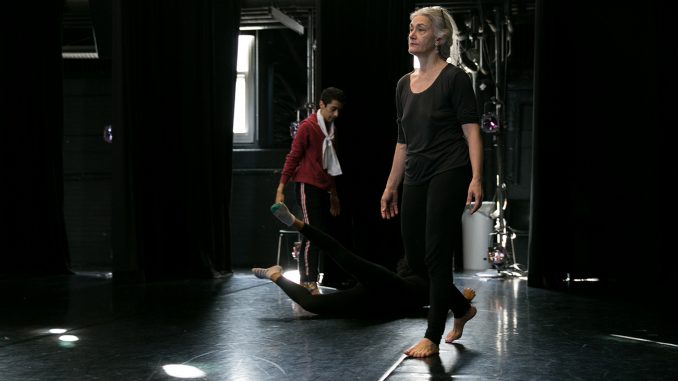
Merián Soto softly gave her students directions as they moved around the studio in a “blind man’s dance.”
In Soto’s Movement Improvisation II course, one student is blindfolded while another stands close by, leading their partner through a series of dance movements.
“The blindfold helps us understand when you’re being led to really allow yourself to move into the unknown, which is what improvisation trains you to know,” said Soto, a dancer, choreographer and improvisation artist. “It opens up all our other senses so that we can access our whole selves, not just our visual sense.”
Soto has worked as a Temple University dance professor since 1999. She brings her passion for the field to her students by teaching unique techniques she has learned in her 25-year career.
Recently, Soto was named a 2019 United States Artist Doris Duke Fellow in Dance, a prestigious honor that comes with a $50,000 award. Soto plans to use the funds for her upcoming documentary “Rompeforma ¡Fenomenal! 1989-1996,” which explores the performance festival in Puerto Rico. The documentary just began production.
“It is a legacy award, they awarded me for all my work, and it feels good,” Soto said. “It’s quite prestigious. It just feels really good to still be in the game.”
“Dance is everything to me,” she added. “That’s what I do, I’m always dancing. It’s been not only my calling, but it’s also been the way I’ve healed my body and it’s the way I maintain my health.”
When she was 22-years-old, Soto moved from Puerto Rico to New York City to become a dancer. Soto said it was a vibrant time in her life, and she started creating her own work in the early 1980s and co-founded Pepatián, a New York-based organization that supports Latinx artists.
Soto’s artistic vision shifted when she met her husband, Pepon Osorio, a community arts and art education professor at Temple, while in New York City. She struggled to maintain a consistent college career while earning a master’s in dance education at the Teachers College at Columbia University and constantly created new art with Osorio, Soto said.
The combination of Osorio’s work as a visual artist and Soto’s skills as a dancer led them to create “interdisciplinary performances,” that combine dance with elements like silence, text or video to create visual art, Soto said.
Now, Soto shares the lessons she learned throughout her career with aspiring dancers.
Early in her career, Soto suffered a back injury that made her rethink the dance styles she could perform.
“It’s something I’ve been dealing with my whole life,” Soto said. “I tell my students all the time that pain is something we have to have a relationship to. We want to work with it and learn from it.”
At the end of her Movement Improvisation II course, Soto and her students sit in a circle and each share one thing they are thankful for or something they felt physically or emotionally during class.
For graduate fine arts student Anne Lukins, Soto’s techniques like the blindfolded dance unlock her senses.
“You can’t rely on your vision,” Lukins said. “You have to be much more perceptive and use extra senses and be present with the guiding touch of your partner.”
Megan Bridge, a graduate dance student, admires how Soto’s teaching style accommodates the class.
“The biggest thing that has helped me is that she teaches from whatever she’s feeling she needs that day, and from reading the room,” Bridge said. “She doesn’t have a strict agenda, but core values to touch upon, which is important to use for improvisation because you should have an idea of what you want to share.”
Soto hopes to educate her students on what she believes to be the future of dance: “levitation.” Using this technique, dancers can learn to move in new ways that feel as though they are levitating, Soto said.
“Learning this triggered in me that kind of desire to try and figure out how to levitate,” she added.”That opened up so many possibilities for me.”





Merián career achievements can’t be acknowledged just in words; they have to be experienced and lived through her teaching. I am profoundly moved by her strength an life’ s determination, and mostly proud to be one of the many who have been transformed just by her presence on stage. I truly love and admire her.